
A staple of Japanese cuisine, dashi is used as the base in countless soups, sauces, marinades, and seasonings. As you dive into Japanese cooking, you will quickly learn the importance of dashi in all aspects of Japanese cooking.
Luckily, unlike many soup broths that can simmer for hours, dashi is quick to make and requires only a few ingredients. In this article, we will walk you through all the different types of dashi and show you how to make the most popular dashi, awase dashi, step-by-step.

Table of Contents
What is Dashi?
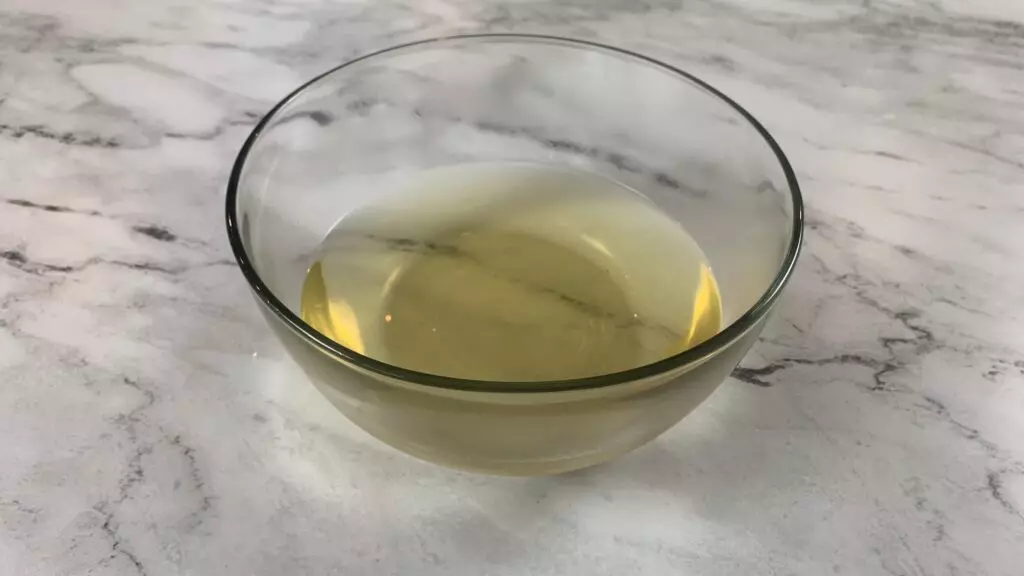
Dashi is a Japanese soup base made by soaking dried kelp (kombu) and simmering dried fish flakes (katsuobushi) in water over a period of time. After the dashi is done simmering, the dashi is strained into a bowl resulting in a fish stock with a strong umami flavor.
Dashi is used in many Japanese dishes including various soups, ramens (including shoyu ramen and shio ramen), sauces (including tempura dipping sauce), and marinades to name a few.
Types of Dashi
What many don’t realize is that there are multiple different types of dashi, each with its own unique, albeit similar, flavor. As many recipes call for dashi, it can be confusing to know which type to use. The most common type of dashi, and the type that we make in our recipe below, is awase dashi. However, we will briefly walk you through several of the different types of dashi below:
Awase Dashi
Also called ichiban dashi, this is the most common type of dashi and consists of kombu (dried kelp) and katsuobushi (dried bonito flakes or skipjack flakes).
Niban Dashi
This is also referred to as “second dashi” as it adds fresh ingredients to the leftover ingredients from the awase dashi. The resulting dashi has the same flavor profile as awase dashi though the flavors are less intense.
Kombu Dashi
As the name suggests, kombu dashi uses only the kombu (or dried kelp). This can be made in two ways; the cold brew or the hot brew. Cold brew kombu dashi is made by soaking the kombu in cold water for 3-4 hours. Hot brew kombu dashi is made by slowly bringing kombu and a pot of water to a boil in a sauce pan and removing the kombu just before the water comes to a simmer. This dashi is a great vegan option.
Katsuo Dashi
Katsuo dashi uses only the katsuobushi (or dried bonito or skipjack flakes) and has a savory seafood flavor.
Niboshi Dashi
Niboshi dashi is made by simmering dried anchovies in a pot of water. Also called iriko dashi, it is commonly used as a base for miso soup.
Shittake Dashi
Shittake dashi is made by soaking dried shittake mushrooms in cold water for around 15 minutes. This dashi provides a rich mushroom flavor and is also a great vegan dashi option.
Shojin Dashi
This dashi is made with dried shittake mushrooms and kombu (dried kelp). This is also a vegan dashi and combines the best of both the shittake dashi and kombu dashi.
How Long Does Dashi Last?
Because it’s so widely used, I like to make dashi in bulk and freeze it. Dashi will last in the fridge for 7 days and in the freezer for up to three months, provided it’s stored in an appropriate air-tight container.
Always remember to properly portion your dashi, or really anything you freeze, so you only thaw what you need. Also, it’s important to label your containers well, especially if you make and freeze several types of stocks, as all soups can look alike after a while in the freezer.
The best way to thaw dashi is overnight in the refrigerator.
How do You Make Dashi?
As mentioned before, dashi is very quick and easy to make. Below we will walk you through how to make awase dashi step-by-step.
Prepare Awase Dashi
1. Combine kombu with 4 cups of cold water in a mixing bowl, cover with a plastic sheet and let soak for at least 4 hours (overnight in the fridge is ideal). You can skip this step if you are in a time crunch.
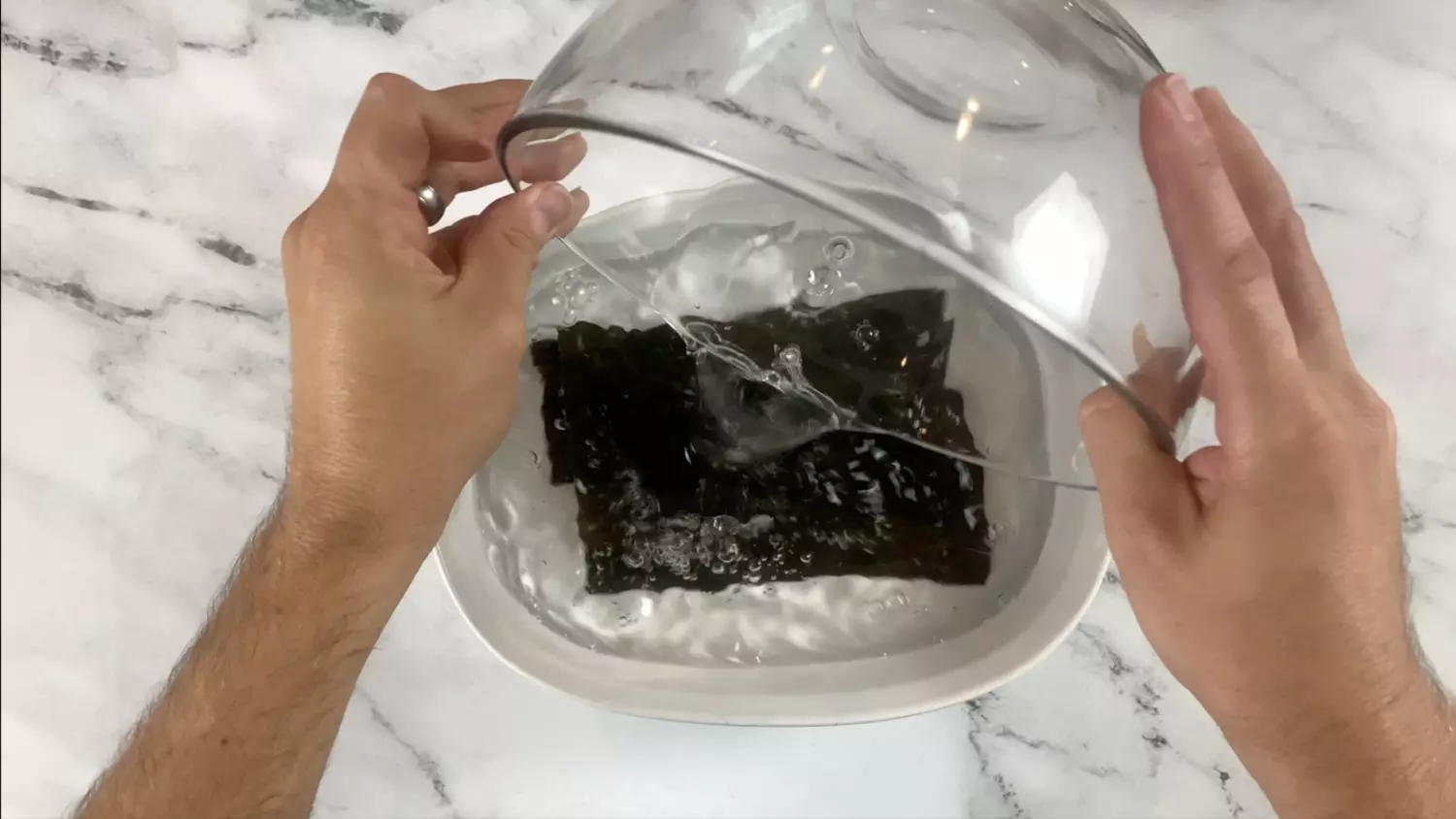
2. Add kombu and water to a sauce pan and heat on medium low heat to slowly bring to a boil.
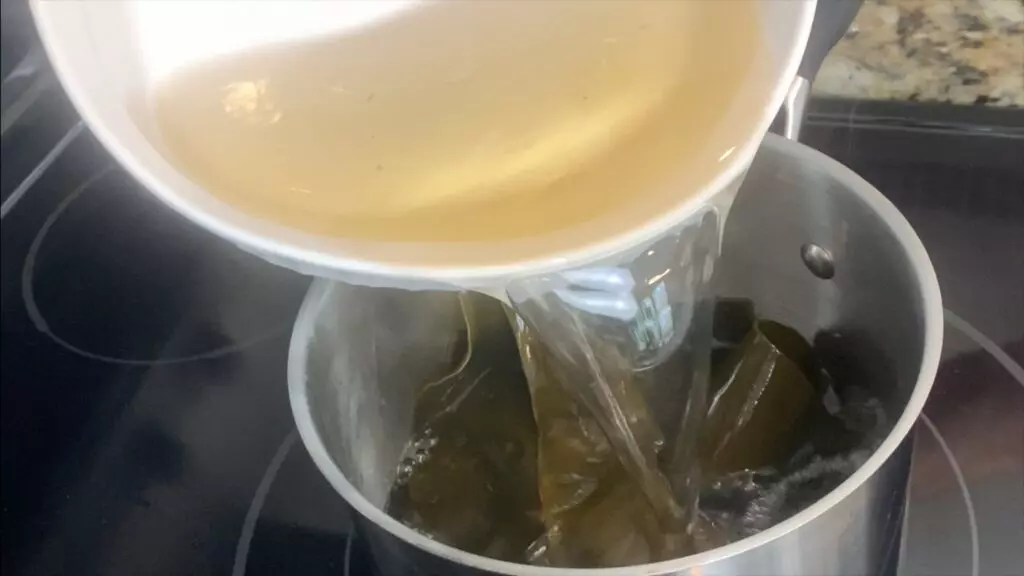
3. Just before the water comes to a boil, remove the pan from the heat and remove the kombu and skim any remnants off the top of the water. Make sure to save the kombu for second (niban) dashi or a number of other recipes if you like.
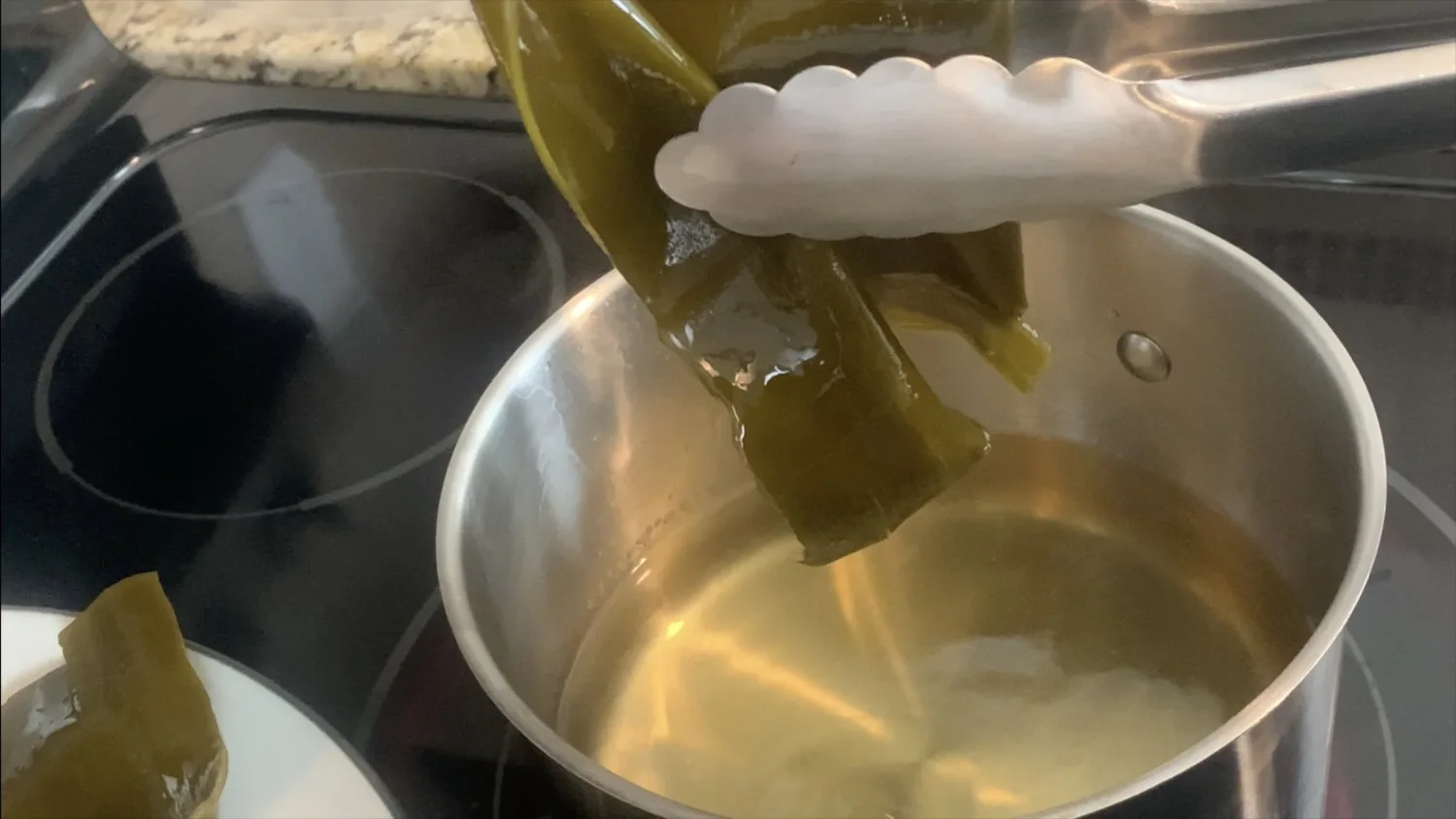
4. Add bonito flakes to the water, return the pan to the heat and bring to a boil.
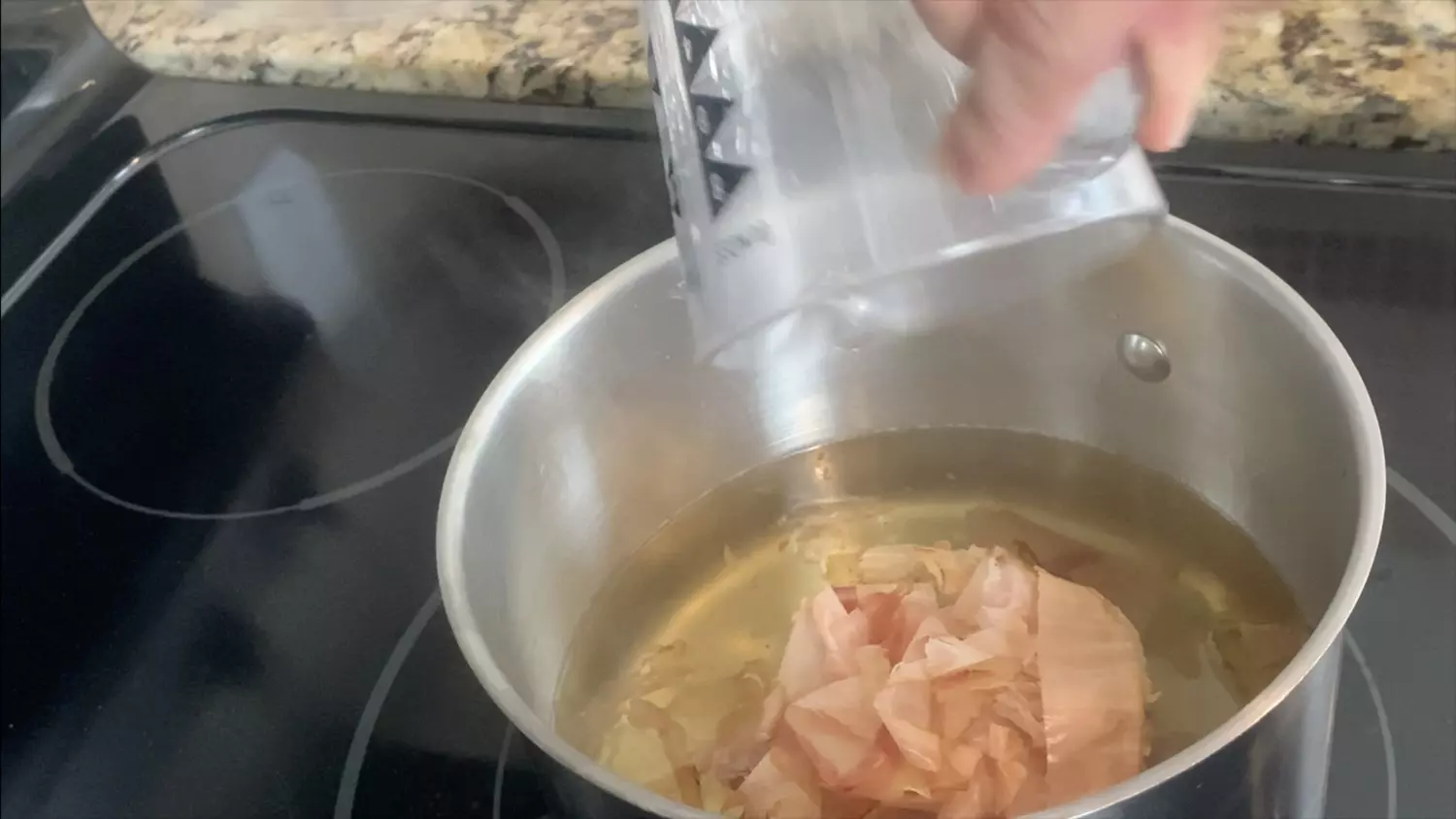
5. Once boiling, reduce heat to simmer and let simmer for around 1 minute before removing the pot from the heat.

6. Let the dashi cool off the heat for about 10 minutes until the bonito flakes sink to the bottom.
7. Strain the dashi into a medium size bowl. Save used bonito flakes for second (niban) dashi if you’d like.
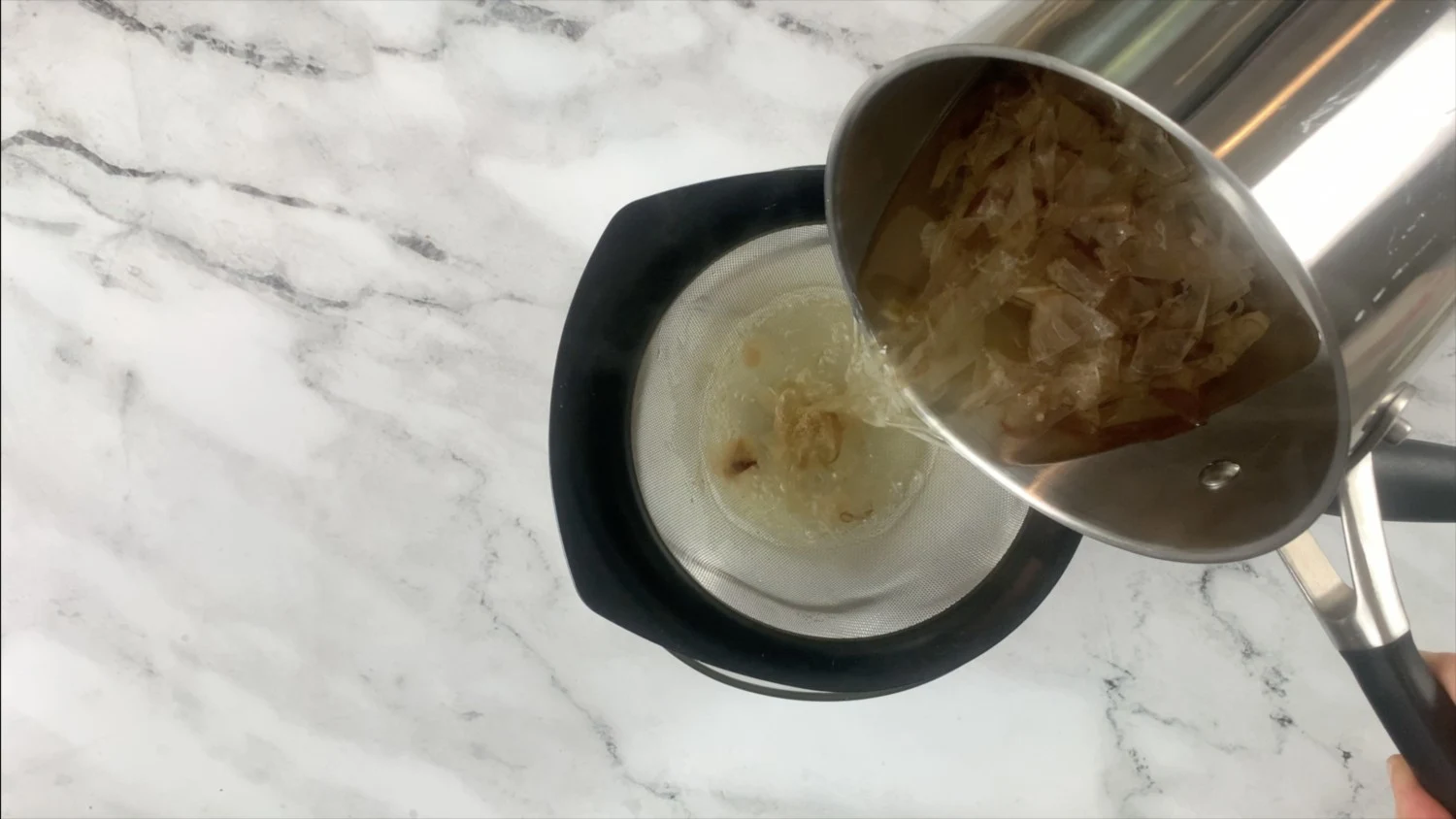
Prepare Second (Niban) Dashi
1. Combined used bonito flakes (katsuobushi) and kombu from awase dashi with 2 cups of water in a medium sauce pan and slowly bring to a boil on medium-low heat.

2. Just before the water is boiling, remove kombu from pan.
3. Once boiling, lower heat and simmer for 10-15 minutes.
4. Remove from heat and add another 1/2 cup of bonito flakes. Let sit for 10-20 minutes or until cool.
5. Strain the niban dashi into a small mixing bowl.

7. Dashi can be stored for up to one week in the fridge and 3 months in the freezer.
Dashi Recipe
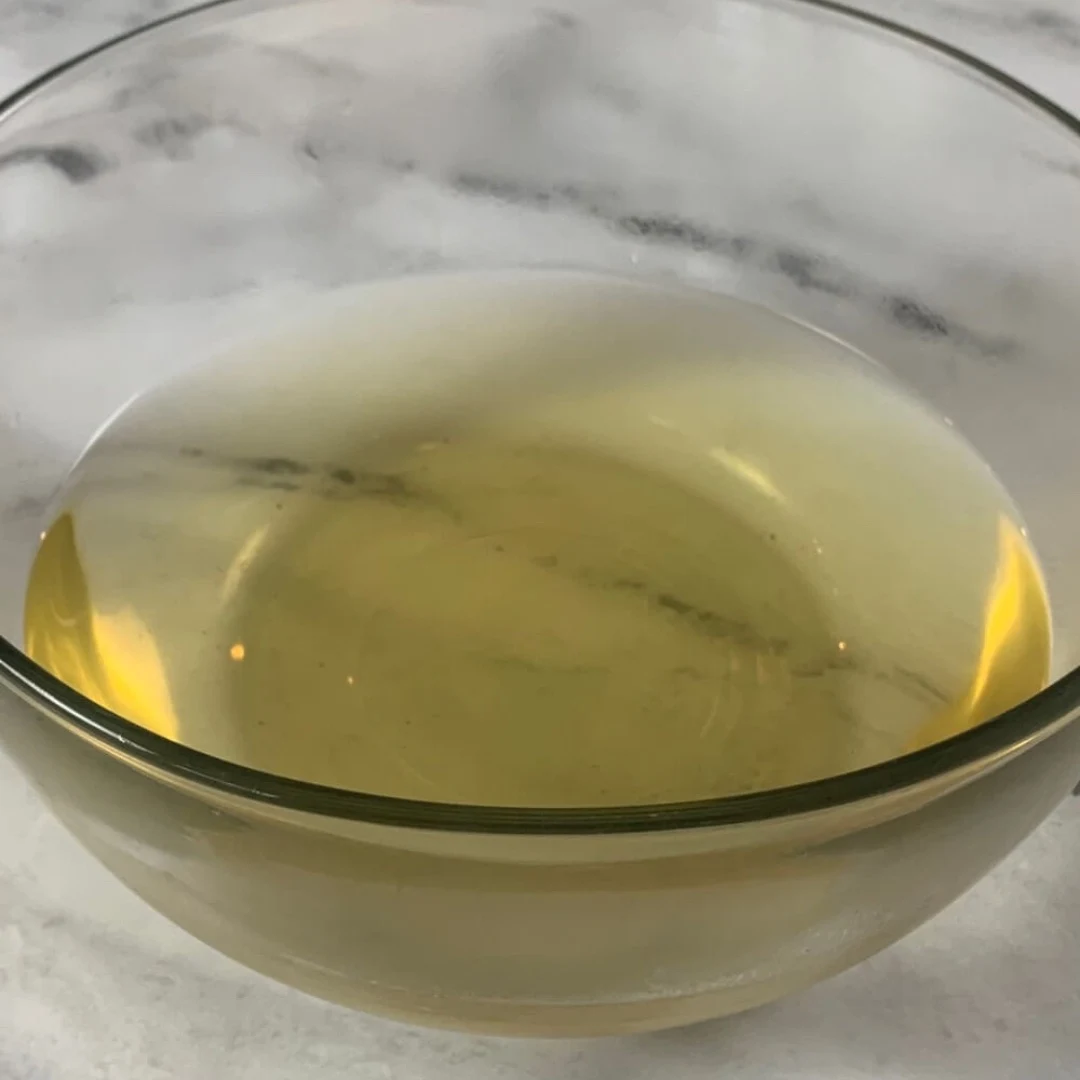
Awase Dashi Recipe
Equipment
- 1 Pot to cook dashi
- 1 Bowl to soak komba
- 1 Measuring cup
- 1 Fine strainer
Instructions
Prepare Awase Dashi
- Combine kombu with 4 cups of cold water in a mixing bowl, cover with a plastic sheet and let soak for at least 4 hours (overnight in the fridge is ideal). You can skip this step if you are in a time crunch.
- Add kombu and water to a sauce pan and heat on medium low heat to slowly bring to a boil.
- Just before the water comes to a boil, remove the pan from the heat and remove the kombu and skim any remnants off the top of the water. Make sure to save the kombu for second (niban) dashi or a number of other recipes if you like.
- Add bonito flakes to the water, return the pan to the heat and bring to a boil.
- Once boiling, reduce heat to simmer and let simmer for around 1 minute before removing the pot from the heat.
- Let the dashi cool off the heat for about 10 minutes until the bonito flakes sink to the bottom.
- Strain the dashi into a medium size bowl. Save used bonito flakes for second (niban) dashi if you want.
Prepare Second (Niban) Dashi
- Combined used bonito flakes (katsuobushi) and kombu from awase dashi with 2 cups of water in a medium sauce pan and slowly bring to a boil on medium-low heat.
- Just before the water is boiling, remove kombu from pan.
- Once boiling, lower heat and simmer for 10-15 minutes.
- Remove from heat and add another 1/2 cup of bonito flakes. Let sit for 10-20 minutes or until cool.
- Strain the niban dashi into a small mixing bowl.
Video
Nutrition
Frequently Asked Questions
How is dashi used?
Dashi is used in multiple areas of Japanese cuisine ranging from bases for soups, ramens, and sauces to components in stir-fry and other Japanese dishes.
Is dashi healthy?
Yes, dashi brings a strong umami flavor to your dish using only natural ingredients and without using salt.
Is dashi gluten-free?
Yes, all the ingredients used to make dashi are naturally gluten-free.
Final Thoughts on Dashi
A cornerstone of Japanese cuisine, dashi brings umami flavor to whatever dish it’s a part of. We hope you found this article informative and helpful! Happy cooking!
Check out the below articles for more great recipes:
Also, for more great videos subscribe to our YouTube Channel.
